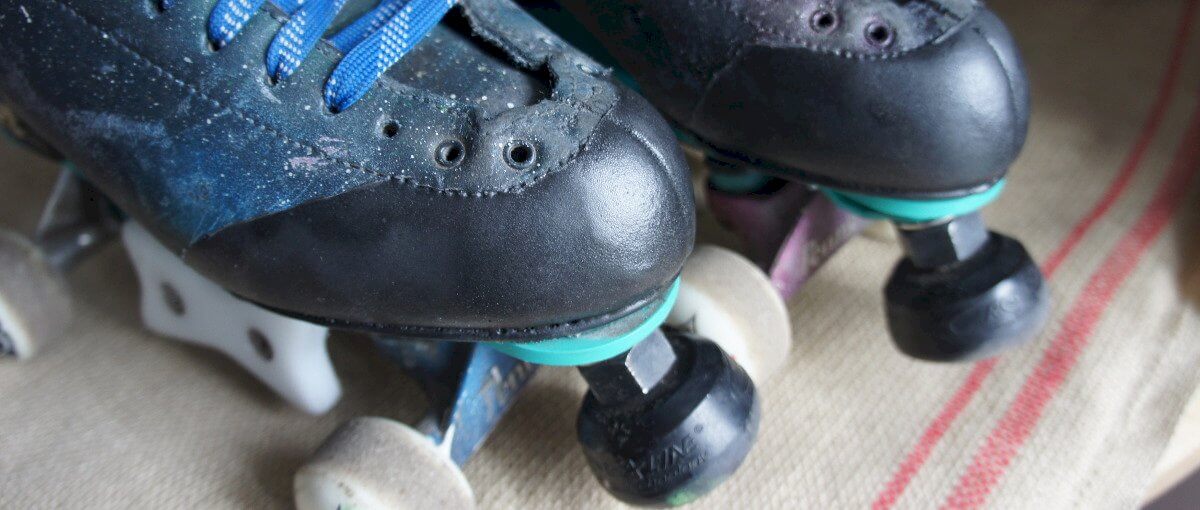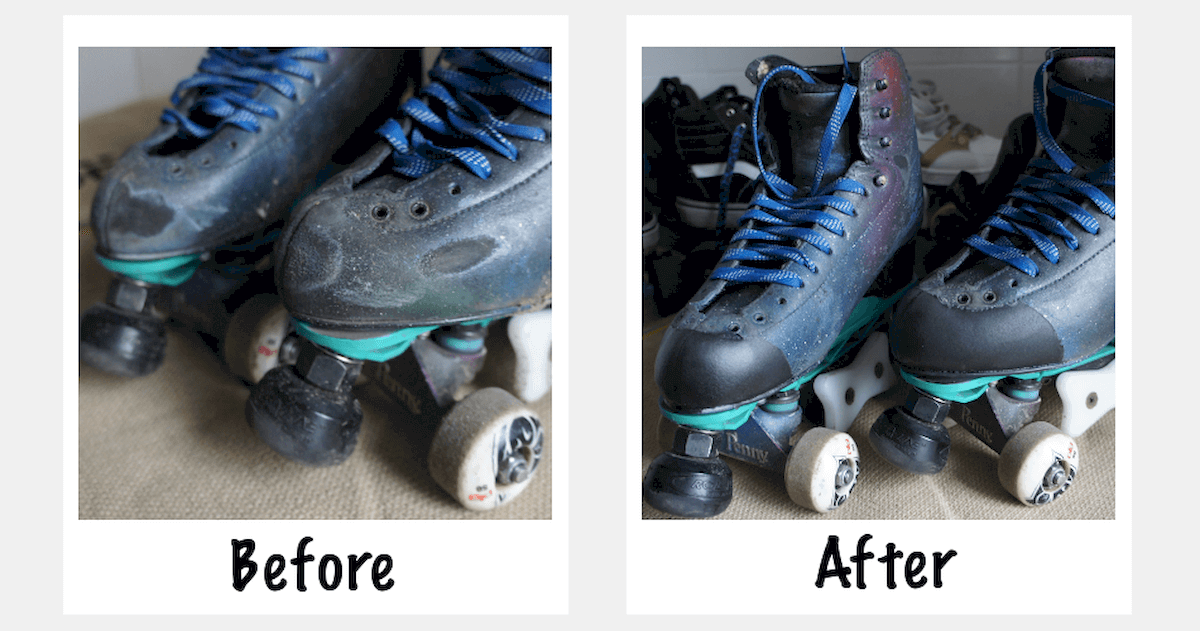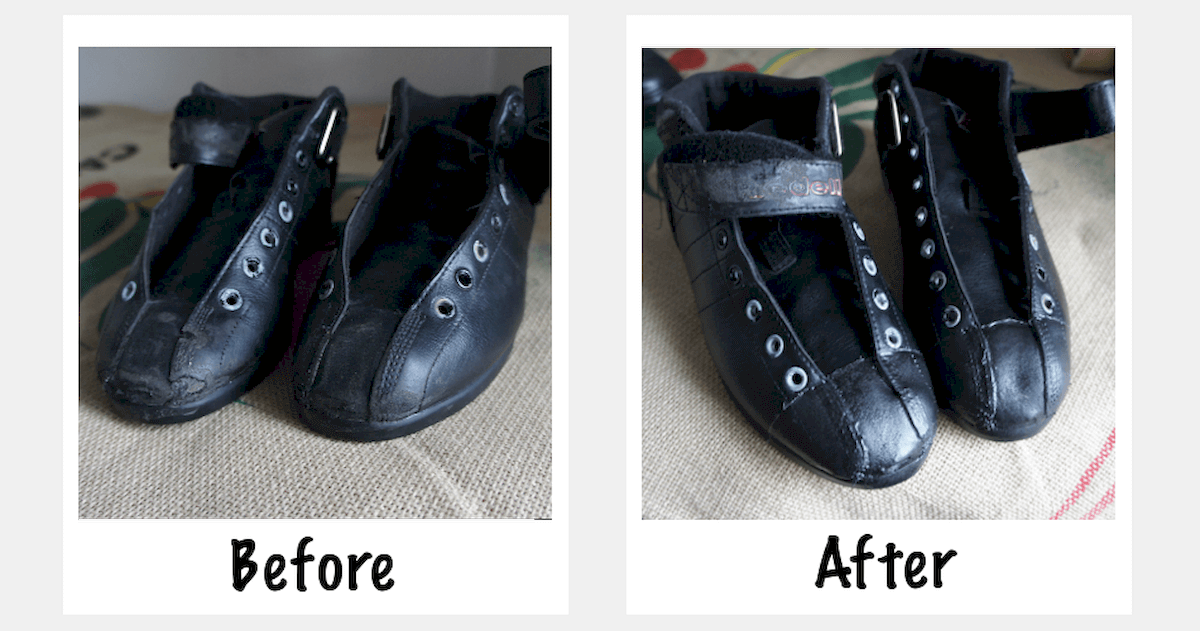Protecting Your Roller Skate Toes: Plasti Dip or Tuff Toe?
TLDR; both are great, which you should use depends on how much protection you need

If you want your roller skates to last a long time you will probably need to protect the toes in some way, as that tends to be the area that get the most wear and tear. Most people will use leather toe guards or toe caps, which can easily be found in most skate shops, or on Etsy, for between $10-30, depending on the style. Those are fine, but what if you want something permanently on your boot, that won't move around? That's when you might want to try coating the toe of your roller skate boot with Tuff Toe or Plasti Dip.
UPDATE:
I have made a video which shows my friend Bootievicious and me putting Plasti Dip on her Chaya Barbie Patin skates. In this vid we show how we do it, and I show the various skates I applied it to, and we discuss the benefits and drawbacks of the toe protecting technique.
BUT
In the video I said I didn't think the Plasti Dip would hold up to skatepark or derby wear, and now I'd like to update that to a hard NO. While I am still happy with my plasti-dipped Flaneurz, the 6 coats I put on my Risport park skates was completely gone after 3 weeks, and Bootie's lasted only 1 week.
What is Tuff Toe? What is Plasti Dip?
Tuff Toe
Tuff Toe is like a liquid rubber you mix and then squeeze out of 2 tubes, very similar to epoxy. It is usually made with construction workers or baseball players in mind, but make skate shops also carry a smaller quantity for the purposes of putting it on roller skates. Tuff Toe generally costs about $20 or €25 per package.
Plasti Dip
Plasti Dip is "multi purpose rubber coating", originally made for dipping tool handles but now usually used for household or automotive projects, and usually comes in a spray can and costs around $15. To the best of my knowledge no skate shops carry this, but you can see it being applied to Chayas (as well as Risports, Vans, R3s, and Reeboks) in a video I made, or to Moxi Skates in this initial youtube video, which inspired mine.
What Should I Use To Protect My Roller Skates? Tuff Toe or Plasti Dip?
Honestly I had never heard of using Plasti Dip on roller skates until my friend showed me the Moxi video, and then I was so curious I wanted to see how it looked on a larger variety of skates. I purchased 2 colors, white and grey
- R3 boots (derby/speed style)
- Risport Artistic Boots
- Vans skate build
- Reebok skate build
- Doc Marten Flaneurz
I had already used Tuff Toe on a different set of Doc Martens that I used as Flaneurz shoe/click skates over a year ago, so this gave me a perfect opportunity to compare Tuff Toe to Plasti Dip.
The main difference I found between Tuff Toe and Plasti Dip is that Tuff Toe is harder to apply—it's so thick it ended up looking kinda goopy on my Doc Martens—but it will last a lot longer. I think the rest of my leather, or shoe sole, will wear out long before my toe does, on my Docs. The Plasti Dip is a lot easier to make it look nice—there were a few times I accidentally touched it and disturbed the surface, but all I had to do to fix it was spray again—but it is not nearly as strong. It only took me 3 weeks to completely wear through the Plasti Dip on my park skates (but it's still fine and lovely on my Flaneurz and casual street skates).
Another difference between Tuff Toe and Plasti Dip is how many applications you get. With Tuff Toe, you mix it and then need to apply immediately, and if you buy the set that is sold by skate shops, you only have enough for 1 pair of skates. With the Plasti Dip, I used the dark grey on 4 boots, and only by the end was it feeling pretty empty. I'd say you can get 3 very solid applications out of it, or use it for one pair of skates but hold onto it to apply several times over the course of a year
| Applications | Ease of Use | Strength | |
|---|---|---|---|
| Tuff Toe | One Time | Difficult to make smooth | Very thick, super strong |
| Plasti Dip | Multi Use | Easy to apply | Thin, will need to be reapplied after awhile |
In general I'd recommend Tuff Toe for something that will get very heavy use, like derby boots or park skates that will probably make contact with the ground on every skate session. But for skates that are not going to get as beat up, and maybe you want to look nicer, I'd say Plasti Dip is fine.
Plasti Dip: Before and After
Plasti Dip Vans

This is pretty discrete, which I'm pleased with. Maybe on a non-black it would be more obvious, but in this case it's only really visible because I'm intentionally letting it catch the light for the photo. I think under normal circumstances it won't be that noticeable. It just looks a little wet on the toes, but the scuffing is fully covered and I think this will protect them well.
Plasti Dip Risport

This one is obvious, more so because of the custom galaxy paint job I added, but I think it suits these boots well. The scuffing is well covered, and it was easy to shape the plasti dip with some masking tape (see pics below). Unfortunately, on my park skates it did not last very long.
Plasti Dip Doc Marten Flaneurz

I love the way these boots look now, with line across the toe. I think I might have underestimated how much wear my Flaneurz get, and I won't be surprised if I need to re-apply in a few weeks or months. But these ones look way better than my first pair of Doc Marten Flaneurz, that I added Tuff Toe to.
Plasti Dip Reeboks

Also pleased. They are currently noticeably whiter in the toes due to the Plasti Dip, but I expect them to get a little dirty, and less obvious, before long. These are new skates that haven't had much wear yet, so the before and after pics aren't actually that different from each other.
Plasti Dip R3

This one is actually a little underwhelming. Yes, I covered up some of the ugliness on these toes from the previous skater never having done anything to protect them in the first place, but I wouldn't expect it to hold up well to many roller derby practices. These are a better candidate for Tuff Toe, I think.
Tuff Toe One Year Later

These Doc Martens have been painted at least 4 colors—which only makes the uneven texture of my sloppy Tuff Toe application even more obvious—they've survived a few months, including to skate parks, and they were worn 1-4 times a week for regular commuting, for about a year. The inside heel is ripped to shreds. And yet, the Tuff Toe remains. The pointed wing tip shape looked better in my head than it did in reality, so I'm not super in love with these, but you need to respect how long this goop has held on. In this case it might have been overkill.
How to Apply Plasti Dip To Roller Skates
Applying Plasti Dip to roller skates is easy. All you need is:
- 1 can Plasti Dip
- Masking Tape
- 2 small plastic bags, or plastic wrap
- A ventilator mask (optional)
- Small amount of clothing detergent
- old toothbrush, or sponge
- old jar or cup
- small knife of box cutter
Instructions:
- Wash the area on your skates you will be painting. You can do this with regular clothing detergent Just mix a small amount (1 TBSP) in a cup or jar with warm water, and lightly scrub it on the skates or shoes with an old toothbrush or sponge. Lightly rinse it off, and let it dry.
Image © Michela Dai Zovi - Apply masking tape to boot, creating a border between the area that will be covered and the area that will not be. This might be a straight line, like my Doc Martens, or maybe somewhat rounded to the side, like my Resorts, or might be following the shape of the shoe, like my Reboks.
- If your skates are mounted, cover the plate, wheels, toe stop, etc with a small bag or plastic wrap.
- Follow the instructions on the plasti dip can. Basically you'll be applying 6 coats, 30 minutes apart in a well ventilated area. Ideally while wearing a ventilator mask.
- When you are ready to remove the tape, use a small knife or box cutter to cut a seam over the tape, so you don't stretch or rip your Plasti Dip layer.

That's it. Have fun, be safe, and please tag me on Insta (@rollerskaterevival) if this helped you decide how to best protect your skates!
